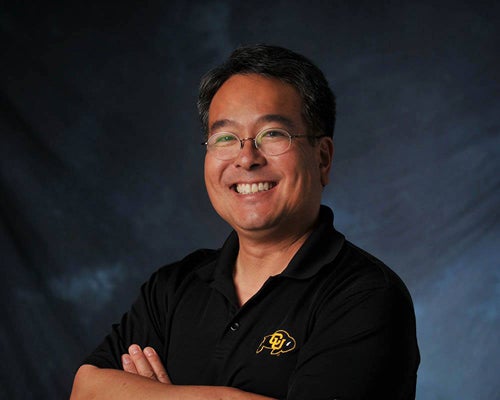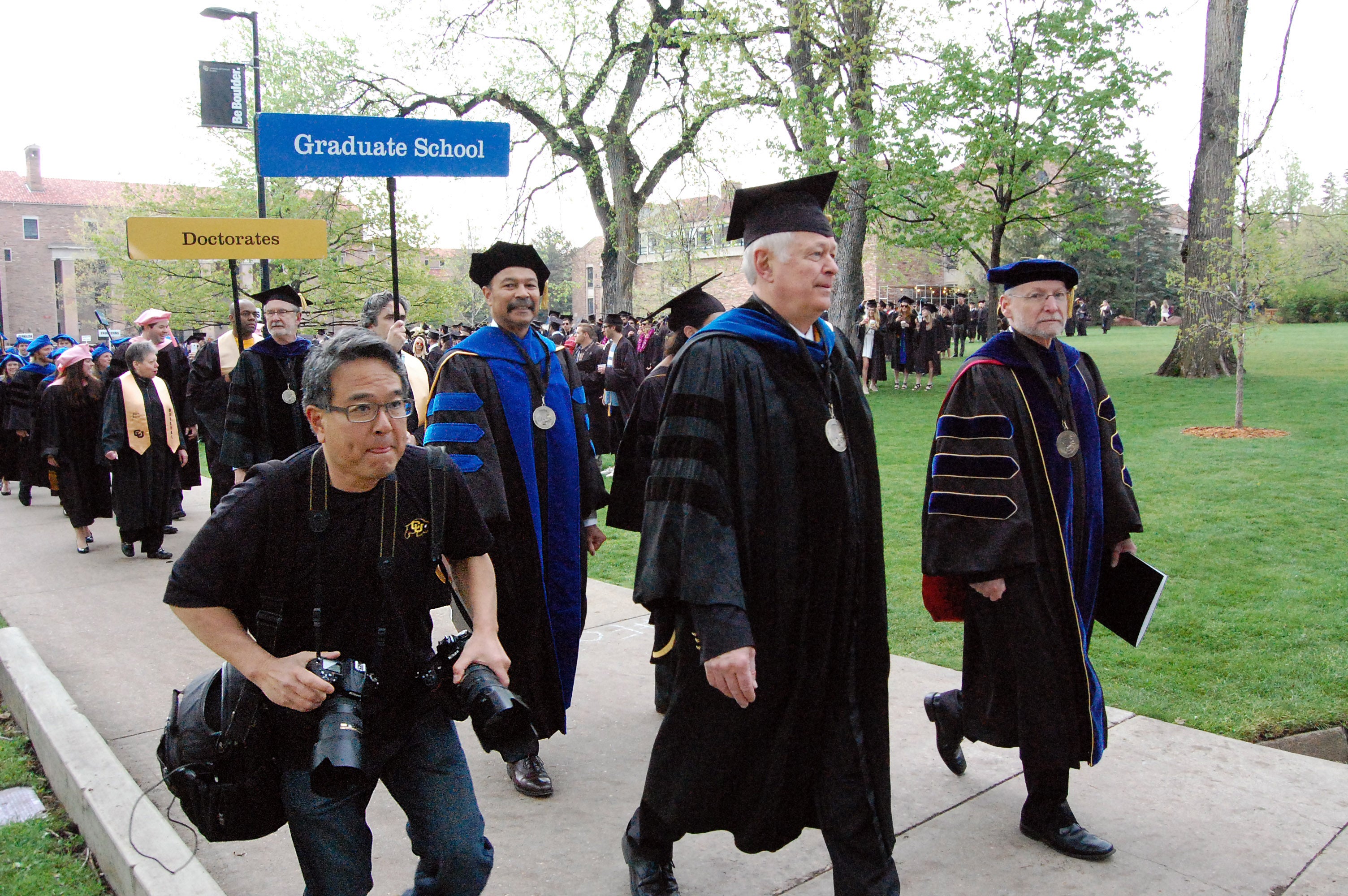‘Rocky’ road circles back to CU-Boulder

“I love covering commencement. I never seem to get tired of it; it’s never routine for me. I love seeing the raw joy and happy emotions,” said Asakawa, associate director of photo and video for strategic relations. “You feed off the excitement and the happiness. That’s kind of the culmination of why people go to CU: to be able to graduate; to be able to have that opportunity to move on.”
Asakawa and his team have plenty of opportunities to experience the joy, often photographing graduation ceremonies at CU-Boulder, CU Denver and the CU Anschutz Medical Campus.
Asakawa’s road back to Boulder started at the Rocky Mountain News. And while Columbine might have been his most memorable photo assignment, his favorite was covering World Youth Day in 1993, when Pope John Paul II came to Denver.
“It was amazing; it was so cool. Something like that just sticks in your mind.”
His time at the Rocky was positive overall, but he admits that covering the 1999 shooting deaths of 13 people at Columbine High School in Littleton took its toll.
“In some ways I think the Columbine coverage really took a lot out of the whole staff emotionally,” he said. “(The Pulitzer) was one of those bittersweet victories where I felt like we were telling an important story of what was happening in the community, and showing the grief and the outpouring of support. But it was still very difficult: multiple funerals, the lingering, ongoing grief. At the time it seemed like it was never-ending.”
Asakawa moved to The Denver Post, which offered a change of scenery and allowed him to delve into feature photography in a more relaxed working environment.

That’s not to say Asakawa escaped photographing the darker side of life. One week after 9/11, he was sent to New York City.
“That was hard, but once again what I was struck by was that was another community that – even with all the pain and suffering – everybody was doing their best to support each other,” he said. “You think of New York as being a hard, gritty urban city, but I think people were being really, really nice and humble as can be.”
He was later sent by the Post to Dubai in the United Arab Emirates to photograph the backstory of the financing of 9/11 for a story by David Olinger.
“It was kind of a culture shock,” he said. “I was struck by how modern and ‘Las Vegasy’ Dubai was; a kind of a resort community that has a lot of money.”
About six years ago, Asakawa was feeling burned out working in newspapers. He felt like he wasn’t being effective and was losing his drive.
“I had to have some long discussions with my wife because I always identified myself as a photojournalist. I knew that, coming here, I would be doing a lot more marketing work,” he said. “But I figured I could use my skills as a documentary photographer to tell the story and help move the marketing in that direction.”
At the university, Asakawa has photographed President Barack Obama on a few occasions, as well as events in athletics, student affairs, diversity and outreach. But the personal connections, especially with the students, are what he likes the best.
“I love immersing myself in a student experience more than anything else and telling their story, telling what a great education they’re getting at CU-Boulder specifically,” he said. “The ancillary thing is getting to meet the faculty and staff who support those students.”
Asakawa has been to Japan to visit relatives; he has traveled to Italy and Europe for family vacations. He and his wife, Michelle, a CU-Boulder alumna, have two daughters: one is a Boettcher Scholar and is attending Colorado College, the other is in high school and is “incredibly creative.”
After decades of being a top-tier photographer – evolving his craft from 35mm film to digital cameras to smartphones – and experiencing firsthand the extremes of life, Asakawa still appreciates the art of capturing life’s moments. But now when he takes photos for fun, it’s usually with his phone, he admits.
“I like to take pictures when I’m on vacation and of my pets – I have two cats and they are often my most willing subjects because my kids and my wife get tired of me pointing my camera in their direction,” he said, flashing his signature smile. “My cats never complain.”




